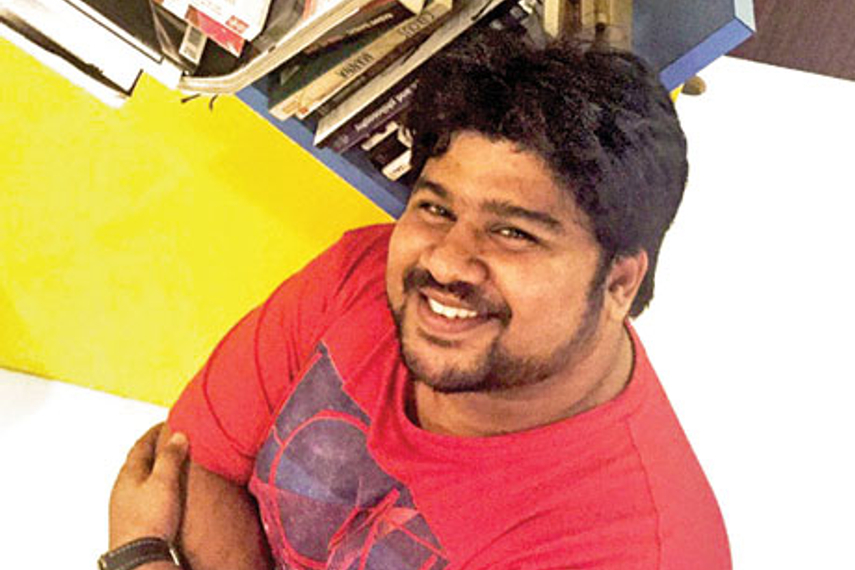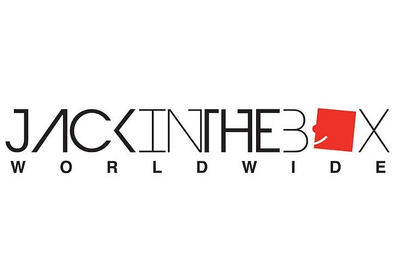Ashish Patkar, AVP and creative director, Jack in the Box Worldwide (JITB), entered the ‘digital agency world’ in 2013, to set up the agency’s Delhi office.
He attributes this move to mainline advertising being ‘too easy’. He explains, “The transition was hard at first, but now it’s amazing. Mainline advertising had become too easy. Cracking a print ad was a piece of cake. The fun was diminishing, because we were doing the same thing every day. So, I moved to digital. I was always interested in digital, but had never really formally thought of joining digital. Jack in the Box was a good opportunity, so I joined the Delhi office, as a part of the team that set up the office. I came down to Mumbai six months later.”
Patkar started off his career in advertising in 2004 on the client servicing side with Rediffusion Y&R. He started off as an intern with Rediffusion when he was still pursuing his BMM. Soon after, he moved to the art side of the creative department, and thereafter, to copy.
“From Rediffusion, I was moved to Everest Brand Solutions as the agency had just resumed operations. I was involved in a lot of the pitches during the restart. After that I went for my masters in marketing communications to the United Kingdom, to the University of Bournemouth. After my masters I applied for a job with JWT (J. Walter Thompson) in the UK and got through it. I moved back to India after a two-year stint. I was placed at the agency’s office in Hyderabad (for two years) with hopes that I’d get my visa sorted and return to the UK. But, somehow or the other that didn’t happen. I moved from Hyderabad to Delhi, to Hakuhodo Percept, and from there I came to Jack in the Box,” he recalls.
Mainline vs digital
Having worked in both mainline and advertising, Patkar says that there are quite a few differences between the two.
“In mainline, clients dictate the act to you. In digital they’re still looking for solutions. In mainline, they almost come and tell you where to place your logo etc. but in digital, they come with you a problem or brief and they look at you to create the solution,” he explains.
He attributes this difference to certain aspects of digital evolution. He explains, “They (clients) are well-versed with digital. But, they’re not the most updated. They’re looking for the unique solution to their problem. On digital, you end up competing with anything that’s there on the internet, in terms of eye balls. So, they’re always looking for something different and the smallest of things provide that differentiation. One more difference is that clients are no more looking at the medium for a one-off campaign. They’re looking at a sustained effort for building the brand. So, that’s the main thing that’s happening. The switch from mainline to digital is still happening. Clients are slowly evolving. The good thing is that they are starting to trust digital agencies more. They’re no longer looked upon as extensions of mainline agencies. They’re looked at as separate entities that do great work. That’s very heartening for an agency like Jack in the Box. Nobody tell us, ‘This is our main campaign, now create three banners for us’. They tell us, ‘This is what we want to achieve, you tell us how we can best achieve it’.”
Patkar adds, “I’m one of the people who got in a little late on digital. Three years ago when I was at Percept, we ourselves used to look down at digital. We would be like, ‘These guys will come. They’ll suggest one app or a game and the client will not accept it, and finally our campaign will be adapted to make three banners and that will be used. But, that has now vastly changed.”
Storytelling in videos
Like many in the industry, Patkar too believes that TVCs are very much alive. But where Patkar sees a change is how these films are now influenced by digital. He says, “TVCs are being influenced by digital. The fact that stories need time is catching on; an example of this is the Google film. It was never shown as a 30-second ad on TV too. If it is a great story, people are willing to see it; whether it is played on TV or YouTube hardly matters.”
He underlines the importance of videos in digital as with TVCs, while pointing to some key differences. “The videos that are made on digital are far better than the TVCs. I can see that myself. I’ve made enough TVCs, and the transition to a digital video is quite drastic. You are no longer bothered about how your product looks and stuff like that. You’re trying to make a statement and be memorable. So, if you take something like FabAlley, that’s exactly what happened. Nobody knew of the brand before, but after the film, awareness and traffic grew, and we had close to 80 per cent increase in their website traffic. It’s a campaign that led to real results at the end of the day. So, the TVC is not dead, but the format of it is going to change drastically.”
UK vs India
Having worked in the United Kingdom for two years, when asked about a comparison between that market and the Indian market, Patkar says, “I think the Indian market is far more exciting. As a creative, I want to keep doing better and more work. In the UK, every campaign takes about six to seven months to be released because of the amount of research and data crunching that happens. You will sometimes come up with a diamond, but the everyday process kind of dulls it (creativity) down. The average turnaround time for the first draft for a brief is about six weeks in the UK. In India, in six weeks we finish a campaign. The first thing I did there (JWT London) was to be patient. I would get a brief in the morning, and I would crack it by the evening. My CD would look at me and say ‘Are you crazy?’”
Patkar worked on the KitKat account during his stint in the UK. He quips that he’s the go-to man for people who want a break, as he has 100 ideas for them. Thanks to that KitKat break.
Work in India
Patkar suggests that his toughest job as a creative was during his stint at JWT Hyderabad. That’s also when he had his first tryst with digital.
He explains, “In Hyderabad, the biggest project I was involved on was the Airtel re-launch. Andhra is the biggest market for Airtel. It’s a market with its own celebrity endorsers and stuff like that. The re-launch was led by me and was one of the toughest launches I’ve done in my career. When the logo was unveiled there was a lot of backlash. That was my first brush with digital, where we came up against audience who we didn’t know how to control. I remember sitting night after night to reply and get the brand’s word out there. A lot of negativity came out. I remember somebody taking out a Videocon logo and saying ‘Isko ulta karenge, toh Airtel ban jaayega’ (If we invert this, it will become the Airtel logo). There was more and they were like ‘memes of today. And, even the song wasn’t very well received. The TVC, I think was great, but apart from that it (the re-launch) wasn’t well received. A couple of months later is when we started seeing a real turnaround. People started identifying with that symbol. It made Airtel a young and contemporary brand. It didn’t happen overnight though – it took two months.” He was group head at JWT Hyderabad.
At Haukuhodo Percept, Patkar was the associate creative director and worked primarily on brands such as Toshiba and Suzuki. On his learnings at the agency, he says, “This was the first time I ran a brand by myself. Toshiba was run by me. Lot of learnings in terms of management of a team and getting people to work together. Most creative teams are very temperamental. So, each person has to be handled differently. Putting the team before myself was what I really learnt at Percept. I was as temperamental as the next person. I realised that it didn’t cut ice. So, I really grew as a creative as I was taking calls myself, facing off with the client, and we did lots of work. Toshiba’s most successful years happened then. We grew the brand to a few hundred crores brand. We were number three (behind LG and Samsung) in the television market. And, I remember in all indicators we’d left Sony behind.”
Mentors
Patkar’s mentors in advertising are two people who worked with him early on in his career. He says, “At Everest, it was Vijay Lalwani, who was the ACD. I learnt a lot from him. At Rediffusion it was Christopher Mendonca, who was my first boss. He was probably the most patient man alive. He would go through a 100 lines of mine before finally selecting one. They had the most influence in my advertising career. Christopher taught me how to write, and Vijay taught me how to write the right way.”
Awards
When it comes to awards, there’s a perception in the industry that digital campaigns from India are not equipped to win internationally. Patkar suggests that this isn’t only the case with campaigns emerging from the country, but also because of the parameters on which the medium is judged.
“I think in India and overseas digital in terms of awards is judged on the wrong criteria. We are trying to force mainline categories for digital. Digital is not a place where you do a ‘one-off’ campaign. You do sustained, 365 days of engagement. You need to start getting judged on different parameters. It’s like getting a fish to climb a tree because your numbers are not going to be as big as mainline for at least the next five years. The reach one TVC gives you, digital is not going to give you that, but it gives the more relevant audience. At Jack in the Box, we run some of India’s best content platforms. They’re not winning awards when we go abroad, because they’re not glamorous – they’re about utility. A person uses the internet either from the point of utility or if you find something interesting. We’re doing both parts of this. Staying in touch with the consumer everyday is far more important than having a blast for a month and then (being) forgotten. We give a lot of emphasis about what people are telling us organically. I remember ‘Be Beautiful’, once we started with their social media work, we didn’t meet their media manager. We had 45 to 50 per cent of their audience coming from Facebook. So it shows digital can achieve a lot for you. In terms of awards, I think it will catch on. I think award festivals are evolving. I think some festivals like Kyoorius are already there. I think LIA has evolved a lot. I think Cannes (Lions) is still way behind in terms of evolution when it comes to digital. D&AD is also catching up in terms of digital,” he elaborates.
Going ahead
“I want to stay in digital. Digital as a definition is changing everyday. When I came in it was about the desktop, now it’s about mobile and god knows what next it is going to be. Maybe it’s about wearables. You can call it digital, but it’ll keep evolving into something different every two years. So, I’m looking for better and newer ideas all the time. I want to be with JITB for the foreseeable future,” surmises Patkar.
(This article first appeared in the 15 May 2015 issue of Campaign India)




.jpg&h=334&w=500&q=100&v=20250320&c=1)
.jpg&h=334&w=500&q=100&v=20250320&c=1)

.jpg&h=334&w=500&q=100&v=20250320&c=1)


.jpg&h=334&w=500&q=100&v=20250320&c=1)


.jpg&h=334&w=500&q=100&v=20250320&c=1)







.jpg&h=268&w=401&q=100&v=20250320&c=1)
